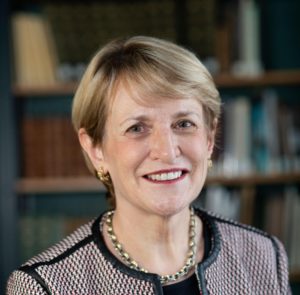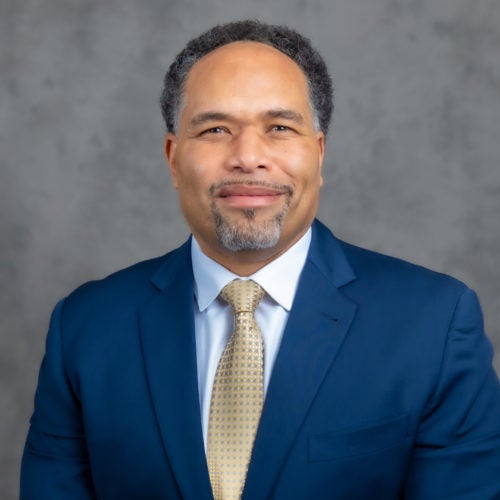Presidential Perspectives: Lorraine Sterritt, Saint Michael’s College
March 31, 2021
Reading Time: 3 minutes

Prioritizing Equity Amid the Pandemic
There are many behind-the-scenes actions a president can take to promote inclusion and belonging, like providing strong support for measures to increase belonging and making these values central to campus-wide decision making and strategic planning processes.
Q: What are the most impactful actions that you have adopted to address the needs of students from lower-income backgrounds and communities of color amid the pandemic? Of these actions, are there any your institution hopes to continue post-pandemic?
At Saint Michael’s, we committed to appointing a new director of our Center for Multicultural Affairs and Services, Dr. Sarah Childs, in the early days of the pandemic. With the leadership and expertise of Dr. Childs, we have structured and expanded access to essential supports that include: affinity spaces for discussion among BIPOC students, leadership training and development from prominent alumni of color across multiple generations, and more widely accessible resources across our Residence Life, Wellness Center, Student Activities, Center for Women and Gender, Admissions and Student Financial Services offices.
In light of the significant strains of the pandemic on students’ mental health, our Director of Counseling and Vice President for Student Affairs drew on substantial student input to hire a mental health counselor of color. We recognized the value to our community of a counselor who brings a first-hand understanding of the experiences of our students of color to this role.
Additionally, we have had to significantly adapt the ways we identify, recruit, and welcome new students to Saint Michael’s, with an eye toward equitable and inclusive practices that make our College an attractive destination for students from lower-income backgrounds and communities of color. These included an extensive menu of online admissions events to ensure we can connect with many more families, an outreach approach to high school seniors designed to prioritize affordability and reduce sticker shock, and a commitment to align our first-year and transfer financial aid packages to broaden access among students from community colleges and other transfer pathways.
These adaptations are likely to lead to permanent changes—and can help inform ongoing improvements to expand and enhance the resources available for students from lower-income backgrounds and communities of color.
Q: In an increasingly polarized political climate, how have you leveraged your role as president to promote an inclusive campus climate and encourage dialogue among staff, faculty, and a diverse student body?
There are many behind-the-scenes actions a president can take to promote inclusion and belonging, like providing strong support for measures to increase belonging and making these values central to campus-wide decision making and strategic planning processes. Additionally, they can contribute to campus-wide conversations on these issues and signal institutional support for measures designed to advance racial justice in their communities.
In service of that imperative, my office has sponsored campus-wide staff and faculty reading groups to discuss important texts that unpack racial equity and the effects of white supremacy. I also joined more than 75 staff and faculty colleagues in a 21 Day Racial Equity Challenge, committing to daily action to advance racial equity in our campus community. And we organized a campus-wide event, the largest of its kind at our College in recent memory, to collectively reflect on the effect of racism on the communities we cherish.
To further support this institutional emphasis on racial equity, I appointed Dr. Margaret Bass to a Special Assistant role in my office expressly dedicated to advancing diversity and inclusion. In just under a year, Dr. Bass and her colleagues on our newly established Racial Justice Task Force have launched the Edmundite Fellows Program for African-American Scholars to diversify our institutional team. In the coming academic year, this program will support two emerging teacher-scholars’ work with our students and faculty in the fields of history and religious studies. She is also spearheading a review of our curricular requirements and offerings, leading revisions to our faculty and staff hiring processes, and collaborating with our new director of our Center for Multicultural Affairs and Services to ensure groups representing BIPOC students, staff, and faculty have a key role in all campus conversations.
Q: Reports of drops in lower-income student applications are beginning to emerge, likely linked to the disproportionate impact the pandemic is having on lower-income communities and communities of color. How is your institution thinking about addressing this challenge now and over the long-term?
We were extremely fortunate this year to receive $750,000 to establish the Emery and Bernice Roy Endowed Scholarship Fund, which will fund increases in annual, need-based aid and enhance our ability to recruit underrepresented minority students. This kind of explicit support helps position Saint Michael’s as an affordable investment for students, addressing the obstacles associated with building connections between predominantly white institutions like our own and students from lower-income backgrounds.
To address this challenge during the pandemic, we deepened an enduring commitment to relationship-building and one-on-one support for lower-income students and communities of color. We continue to maintain partnerships with a variety of community based organizations, such as CFES Brilliant Pathways, to extend our reach. And in recognition that our nearby refugee community still struggles to access on-campus events, we increased support for the Vermont Student Assistance Corporation and its outreach efforts.
In addition to highlighting our longstanding test optional policy, we introduced changes to our admissions process to increase access, including a focus on increasing FAFSA completion rates. Staff offered FAFSA Completion Grants to encourage students and families to submit the application and worked this summer to call every family once they received their financial aid packages, affording the opportunity to ask questions and conduct these conversations in their preferred language. We are pleased to see that our FAFSA completion rate is the same as this time last year, even as submissions nationwide decline by almost 10%.
Finally, our alumni of color stepped up to play an active role in our admitted student and outreach programs. By demonstrating our long-standing success in building relationships and community for students from communities of color, we are well-positioned to make strong connections with the next generation of students arriving on our campus.


